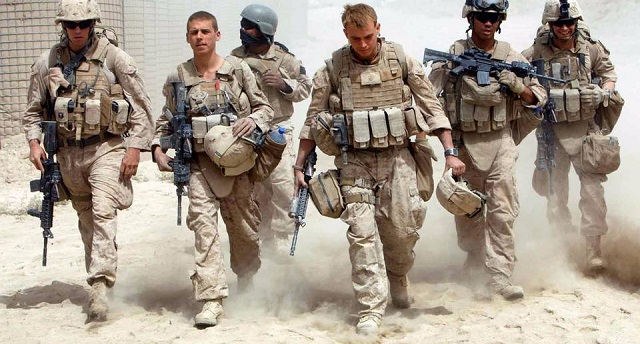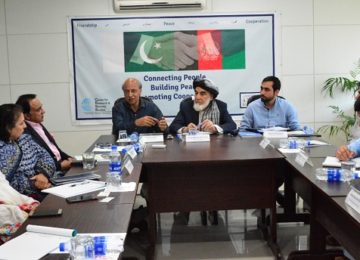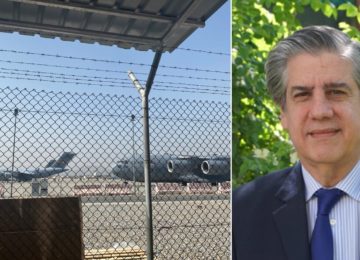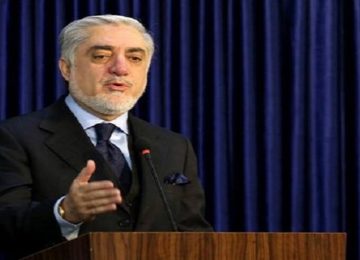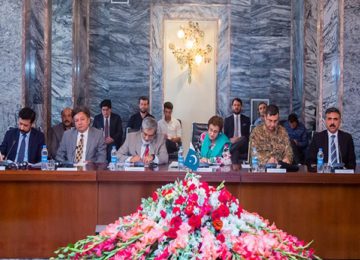Even though the US has spent over $70bn in training Afghan forces since 2002 – and additional funds of over $4bn a year as per a report by SIGAR (Special Inspector General for Afghanistan Reconstruction) – the Afghan forces continue to struggle against increasing influence of the Taliban in Afghanistan. More than half of Afghanistan continues to stay under Taliban rule. For fiscal year 2018, the US Congress allocated $4.9 billion to support Afghan security forces, with $4.2 billion in the previous year and $3.8 billion in fiscal year 2016. Increasing funding has not changed the situation much on ground.
Habib Wardak, an Afghan security specialist says, “When the idea of creating the Afghan National Security Forces (ANSF) came up, it was a rapid building up of the army. The government was recruiting anyone from militias to warlords” (Al Jazeera September 22, 2017). In March 2017, over one thousand Afghan army service members were fired on grounds of corruption – a direct outcome of hiring indiscriminately.
The Special Inspector General for Afghanistan Reconstruction (SIGAR) has released quarterly reports detailing which areas are under Taliban control and those under the coalition forces. The US State Defense department has not released such detailed data since American boots went on ground in Afghanistan in 2001. The details of numbers recruited in the Afghan Army, along with how many have already lost their lives, and how much and what quality of equipment they hold, are still shades of grey for the American tax payer and the world.
In many cases, the US taxpayer’s money has been wasted. For example, the $6 million US programme designed to breed Afghan and Italian goats for improved cashmere quality fell through as most of the animals got sick and later died.
The US and allied forces have failed to uplift the system – that remains largely corrupt – and restructure institutions. Afghanistan remains dependent on foreign aid. The state weakness and resurgence of Taliban can lead to more chaos, more killings and more anarchy.
By blaming Pakistan for every failure, the option of gaining Pakistan’s support towards regional peace is being seriously compromised. The policy of alienating Pakistan from being a part of peace process by Trump and bulldozing Pakistan limits the success of US and allied forces in reaching a political settlement.
The US should have prioritized reaching a political settlement with Taliban which so far it has failed to achieve. The US also should have strengthened the Afghan National Security Forces. This too, the US has failed to achieve. Anarchy and runover of current Afghan political dispensation is the likely outcome if US and allies leave Afghanistan today.
China, Iran and Russia share the fear of a spill-over and growth of Islamist movements. The presence of ISKP (Islamic State-Khorasan Province) consisting of members of Taliban, Al-Qaeda and other outfits like IMU (Islamic Movement of Uzbekistan) has created common interest to create a combined front. Post 2009, many Uyghurs joined ISKP and ISIS based in Iraq as well as Syria. China’s huge outreach to the world in form of the Belt and Road Initiative (BRI) is also a strong reason to desire regional peace. China favours Afghan government’s political settlement with the Taliban, an objective shared with Pakistan who has suffered heavily due to instability in Afghanistan and continues to do so. To achieve this end, China has established a trilateral contact group with Pakistan and Afghanistan to rebut terrorism.
Iran too opposes ISPK and the outfit’s ideology. Year 2017 witnessed attacks not only on Khomeini’s shrine but also on the Iranian Parliament by the Islamic State. With India’s growing closeness with Israel and US with Modi at helm, Iran is looking at creating alliances with other states.
There is a new alliance of these powers evolving, willing to partner with Pakistan to bring regional peace and limit Islamist movements. Russia detached itself from Afghan policy of the US and its allies in 2016 and has made efforts to host talks for a peaceful Afghanistan. Russia too supports a political settlement with the Taliban. This scenario basically brings Russia, China, Pakistan and Iran on the same page on the question of Afghanistan.
However, where is the US on the issue of Afghanistan?
For the US, there is no timeline for exit. It plans to expand forces in Afghanistan. “We are not nation-building again,” Trump had said. “We are killing terrorists.”
The failure of “killing terrorists” in the last 16 years has not yet delivered and is unlikely to do so in future either. Refusal to deal with Taliban by the US directly too is an approach that is self-defeating to the purpose of a peaceful Afghanistan.
What are the US objectives in staying in Afghanistan today as opposed to time of Afghanistan’s invasion?
The surge in Afghanistan-produced opium is 43% in 2016. The US has failed to curb the increasing production and trade of opium. To the contrary, in Garmsir district the government has imposed a tax on opium production to bolster local government’s earnings much as Taliban have imposed on production of opium in lands under their control. Reportedly, Afghan officials are directly involved in this competition for greater revenue with US army personnel sucked into supporting the government functionaries.
According to NYT, Trump is drawn to “Afghanistan’s vast mineral wealth, which his advisers and Afghan officials have told him could be profitably extracted by Western companies” (July 25, 2017). This, he (Trump) feels, can be a reason to stay engaged in Afghanistan, reportedly.
The US is not leaving Afghanistan anytime soon.
Beijing and Moscow had defended Pakistan when Trump had lambasted Pakistan for being soft on terrorists on her soil. Later, the US blocked military aid to Pakistan and pushed for putting Pakistan on the FATF list of nations supporting funding to terrorist outfits.
This strategy has pushed Pakistan’s back against the wall and forcing her to look towards other nations for an alliance to cover her back. Moscow and Beijing fit the bill to a T.
The writer Yasmeen Aftab Ali is a lawyer, academic and political analyst. She has authored a book titled ‘A Comparative Analysis of Media & Media Laws in Pakistan.’ She can be contacted at: yasmeenali62@gmail.com and tweets at @yasmeen_9
© Center for Research and Security Studies (CRSS) and Afghan Studies Center (ASC), Islamabad.



